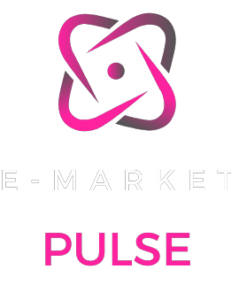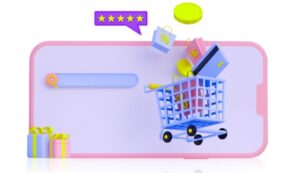

Cross-Platform Digital Marketing: Reaching Your Audience Everywhere
Introduction:
In the ever-evolving world of e-commerce, where self-made e-sellers showcase their unique creations, the ability to reach and engage audiences across multiple platforms is paramount. Cross-platform digital marketing goes beyond a singular online space, allowing e-sellers to connect with potential customers on various channels. This article explores effective cross-platform marketing strategies tailored for e-sellers, particularly those operating on platforms like Etsy, to maximize visibility and increase online sales.
Understanding Cross-Platform Digital Marketing:
Cross-platform marketing involves promoting your products and brand across various online channels, ensuring a cohesive and integrated approach. The goal is to reach your audience wherever they are, creating multiple touchpoints for engagement and conversion. For e-sellers, this means expanding beyond the primary platform, such as Etsy, and leveraging the vast landscape of digital marketing opportunities.
Identifying Key Digital Platforms:
1.Social Media (Facebook, Instagram, Pinterest): Leverage the visual nature of platforms like Instagram and Pinterest to showcase your products. Utilize Facebook for community-building and targeted advertising.
2.E-commerce Marketplaces (Etsy, Amazon, eBay): Enhance your presence on e-commerce marketplaces like Etsy, Amazon, and eBay. Optimize product listings, utilize paid advertising options, and engage with customer reviews.
GET EXCLUSIVE ACCESS TO OUR EXPERTS CREATOR'S CORNER TIPS AND ADVICE:
- Get AHEAD of the Competition.
- FREE Membership to Mia’s Weekly Insiders secrets.
- FREE tailored resources and gifts.
- PLUS qualify to receive personal email support.

* We respect your privacy. We will not spam you.
3.Personal Website or Blog: Establish a personal website or blog to showcase your brand story, share behind-the-scenes content, and provide a direct link for interested customers to explore and purchase your products.
4.Email Marketing: Build and nurture your customer base through email marketing. Send newsletters, promotions, and personalized product recommendations to keep your audience engaged.
5.Collaboration with Influencers: Partner with influencers in your niche who can introduce your products to their followers. This extends your reach and adds credibility to your brand.
Creating a Unified Brand Presence:
1.Consistent Branding: Maintain consistent branding elements, including logo, colors, and messaging, across all platforms. This ensures a seamless and recognizable brand presence.
2.Coordinated Campaigns: Plan and execute coordinated marketing campaigns that run simultaneously across different platforms. This creates a synchronized brand message and maximizes impact.
3.Integrated Content: Develop content that can be adapted for various platforms. For example, create visually appealing product images for Instagram and Pinterest, while crafting longer-form content for your blog.
4.Unified Customer Experience: Ensure a cohesive customer experience by integrating your e-commerce platform, website, and social media channels. Provide consistent information and a streamlined purchasing process.
Tailoring Strategies for Different Platforms:
1.Social Media:
**Instagram:** Emphasize visual storytelling with high-quality images. Use Instagram Stories for behind-the-scenes content and product highlights.
**Pinterest:** Create shareable and pinnable content, including mood boards and lifestyle images. Optimize descriptions for searchability.
2.E-commerce Marketplaces:
**Etsy:** Optimize product listings with relevant keywords. Utilize Etsy’s advertising tools and promotions to boost visibility.
**Amazon, eBay:** Leverage sponsored product ads and optimize product listings with detailed descriptions and high-quality images.
3.Personal Website or Blog
**SEO Optimization:** Implement SEO best practices to improve your website’s visibility on search engines.
**Content Marketing:** Create blog posts or articles related to your niche to attract organic traffic.
4.Email Marketing:
**Segmentation:** Segment your email list based on customer preferences, purchase history, or engagement level.
**Personalization:** Personalize email content, including product recommendations and exclusive offers.
5.Influencer Collaboration:
*Targeted Selection:** Choose influencers whose audience aligns with your target market.
**Collaborative Content:** Work with influencers to create content that seamlessly integrates with their existing brand messaging.
Measuring Cross-Platform Success
1.Traffic and Engagement Metrics: Monitor website traffic, social media engagement, and interaction on e-commerce platforms to gauge audience interest.
2.Conversion Rates: Track the conversion rates on different platforms to understand where your audience is most likely to make a purchase.
3.Sales Attribution: Utilize tracking tools to attribute sales to specific marketing channels. Understand which platforms contribute most to your overall revenue.
4.Customer Feedback: Pay attention to customer reviews and feedback on different platforms to identify strengths and areas for improvement.
Overcoming Challenges:
1.Resource Allocation: Allocate resources effectively based on the performance of each platform. Focus more on channels that yield better results.
2.Consistent Communication: Maintain consistent communication across platforms to avoid confusion or conflicting messages.
3.Adapting to Platform Changes: Stay informed about updates and changes on each platform, adjusting your strategies accordingly.
Conclusion:
For self-made e-sellers, the art of cross-platform marketing is a dynamic and essential component of a successful online business. By strategically connecting with audiences across various platforms, e-sellers can amplify their brand presence, reach new customers, and drive increased sales. With careful planning, unified branding, and tailored strategies for each platform, e-sellers can navigate the digital landscape with confidence, maximizing their online potential.
RELATED ARTICLES FOR CREATORS MARKETING IDEAS AND TOOLS
Bringing you the latest information, ideas, products and services for your E-commerce business.
Copyright 2024 E-Market Pulse
Contact Us
We may receive compensation from partners listed through affiliate partnerships, at no cost to you. This doesn’t influence our ratings, and the opinions are our own
Subscribe to our Newsletter
Get updates on products and services specially targeted to help you succeed.
